Bike-activated traffic Signs half the conflict between cyclists and vehicles.
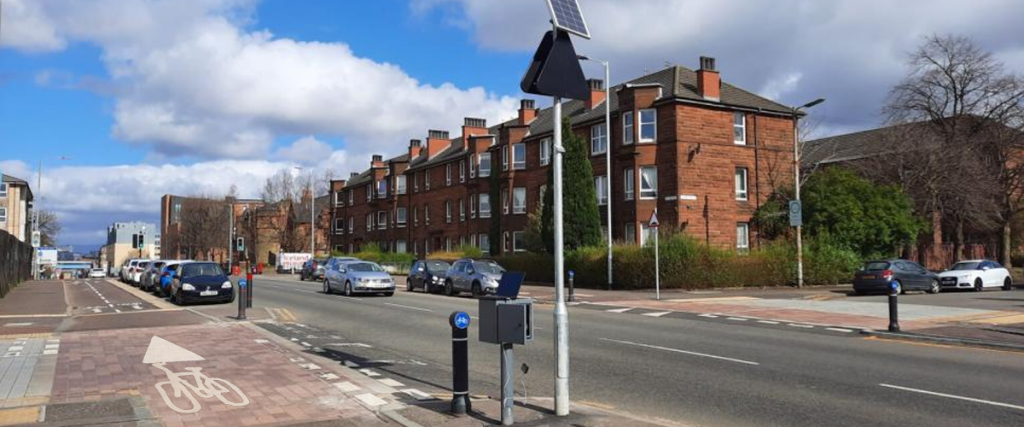
Conflicts between motor vehicles and bikes have halved at a junction in Glasgow according to initial results from the trial of bike-activated traffic warning signs which are set to be rolled out in Scotland’s largest city.
Q-Free, which has announced a four-year partnership with Glasgow City Council to supply and install cycle detection equipment and associated services, says that its systems, which can feature up to three signs and associated sensors, will be installed at 16 different locations.
The interactive and customised flashing signs alert drivers that cyclists are approaching a junction or are in the cycleway ahead, where visibility may be obstructed as a result of buildings or street furniture, and include solar panel-powered controller boxes. The signs themselves are triggered by a cyclist riding over a sensor some 75 feet from the junction.
The sites have been chosen based on historic collision data as well as their potential to reduce conflict between cyclists and other road users, and an initial trial at one location with a history of such incidents saw them fall from 17 per cent to 8 per cent of interactions, while the percentage of motorists who did not give way to cyclists fell from 35 per cent to 22 per cent.
Christine Francis, head of technical services at Glasgow City Council, said the partnership aimed to increase the safety of cyclists.
“A key aim for Glasgow City Council’s strategic cycling plan is to create a vibrant city where cycling is accessible, safe and attractive to all,” she said. “Safety is seen as the main barrier to people cycling more frequently, so improving cyclist safety is a cornerstone of our efforts to promote a shift to more sustainable forms of transportation.
“We worked closely with the Scottish team at Q-Free on an integrated system that gives priority to cyclists at signalized crossings. The success of this solution led to further partnership working and idea sharing.”
“Glasgow City Council was the first local authority in the UK to install cycle activated electronic signage on the road network,” she added. “We have since installed these at further 16 locations around the city to help improve safety for cyclists.”
According to the Glasgow Indicators Project, levels of cycling into and out of the city centre increased by 111 per cent from 2009-18, with a 22 per cent increase in the final year of that decade alone, and it is likely there will have been further growth in the wake of the coronavirus pandemic.
Colin Reekie, Q-Free UK’s head of business development, Colin Reekie, commented: “Glasgow has truly embraced alternative mobility.
“Bicycling has become such a part of the community as the city centre becomes an increasingly attractive place to live, work, and play, and we couldn’t be more excited to help the region protect their most vulnerable road users.”



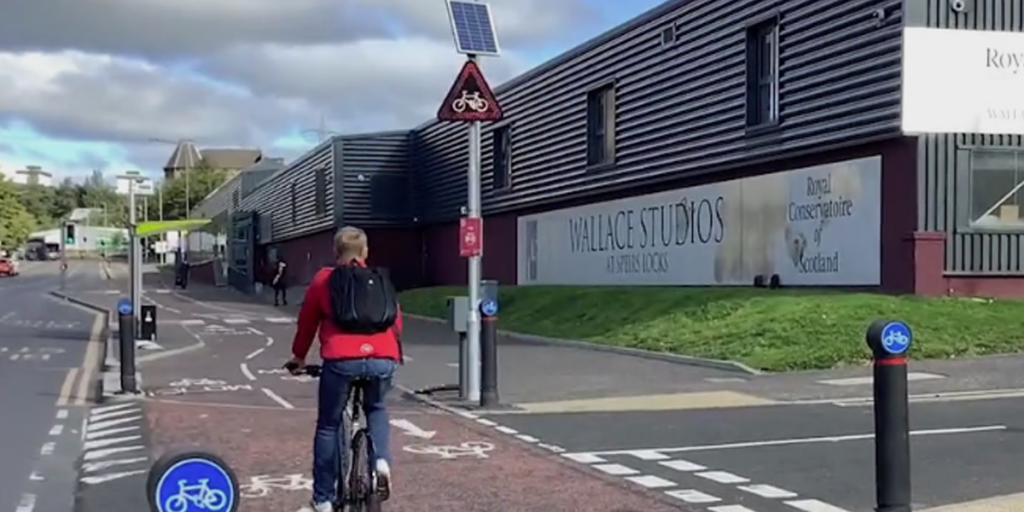

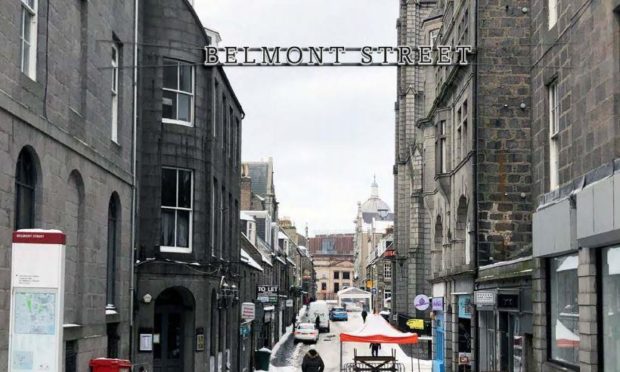
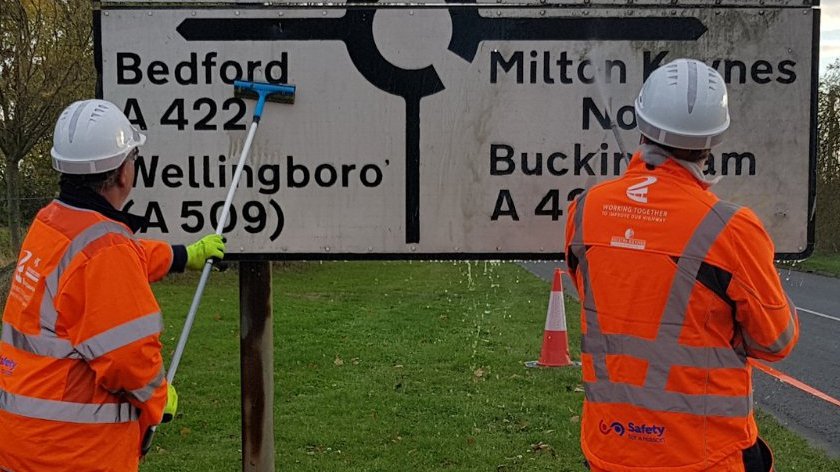
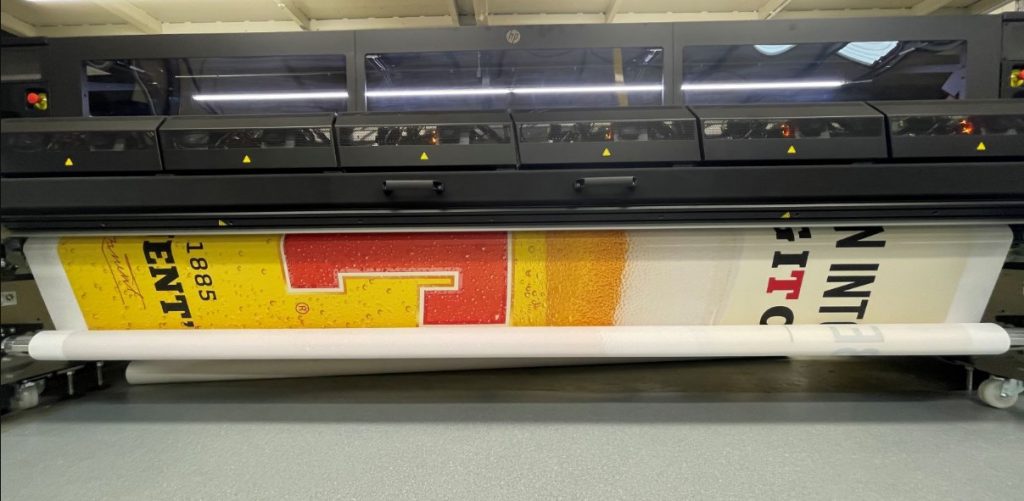
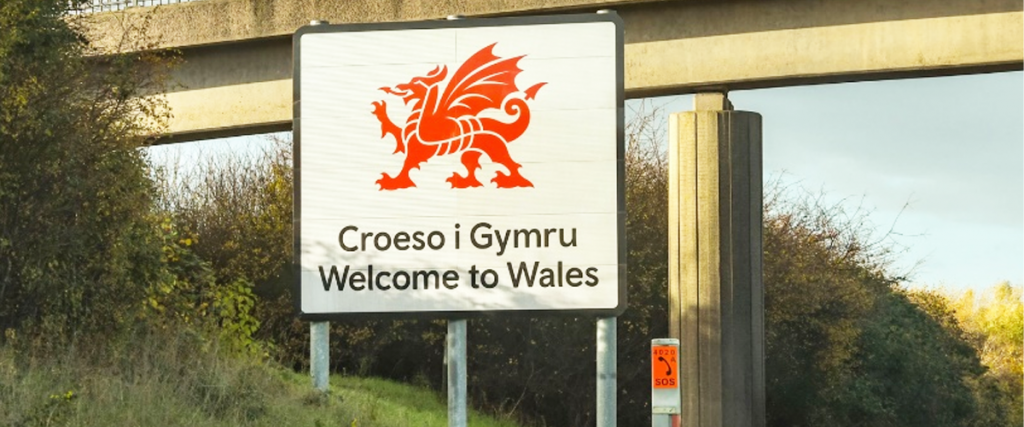
Responses